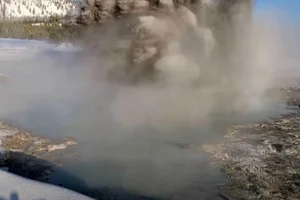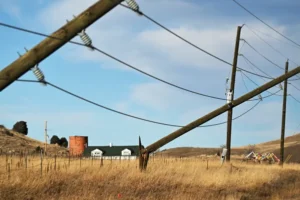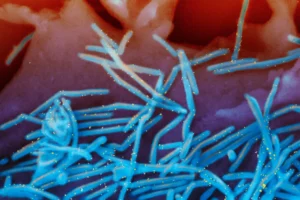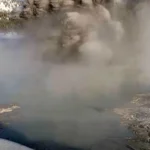Wyoming’s Medical Deserts: Bringing Health Care to Rural Residents (Part One)
Wyoming’s first new hospital in decades opens in Saratoga, facilities planned in Pinedale and Riverton
- Published In: Other News & Features
- Last Updated: Oct 09, 2023

On May 30, the North Platte Valley Medical Center opened, and its emergency room treats five to six patients every day. (Wyoming Truth photo by Carrie Haderlie)
By Carrie Haderlie
Special to the Wyoming Truth
Kari DeWitt was pregnant with two young daughters at home when she experienced a medical emergency in 2014. The problem: She lived in Sublette County (population 8,697 in 2021), the only Wyoming county without a hospital.

DeWitt rushed to the emergency room at the Pinedale Medical Clinic, only to be told that since it was not a hospital, the medical providers there couldn’t offer her the blood transfusion she needed to treat her partially ruptured placenta. Instead, they said they could stabilize and transfer her to a higher level of care at a facility in Jackson, Idaho or Salt Lake City.
“They weren’t sure I’d live to make it to Idaho,” recalled DeWitt , who waited 45 minutes for a plane to arrive with a surgeon and equipment the transfusion. “. . . It was just a shocking moment.”
DeWitt survived the medical crisis, gave birth to a healthy son and became passionate about bringing a hospital to her community so that others wouldn’t have to wait or travel for care. Today, she serves as the public relations and foundation director for the Sublette County Hospital District.
Over DeWitt’s desk hangs a 1925 framed copy of the Big Piney Examiner, with a headline that is a daily reminder of health care challenges that have long faced residents in remote Wyoming: “Our most essential need is a hospital.”
New facilities in progress
Nearly a century later, the need for new facilities is finally being met. In three remote Wyoming counties, residents are banding together to make health care accessible to their families and neighbors.
Collectively, residents of Carbon, Fremont and Sublette counties have secured over $87 million in federal funds to help pay for new hospitals. Combined, the three counties have a population of 62,682, and while not all will seek out health services at the new facilities, they are a group of people who often have had to travel long distances for lifesaving medical treatment. And as hospitals across the state age, the need for expanded access to care becomes even more crucial.
“Health care is fundamental to the prosperity of [small] towns, towards vitality and safety and future economic growth,” said Glenn Pauley, state director for USDA Rural Development.

“Pinedale is beautiful, and it is remote,” added DeWitt. “We have great recreation. But it is not 1812. It is not the Wild West. We’re not pioneers trying to push through. We need access to health care. We need access to blood transfusions and all the other lifesaving things a hospital will bring.”
In 2025, a critical access hospital — 40,000-square-feet with 10 inpatient rooms — is slated to open in Pinedale. It will include a 24/7 emergency room with a separate entrance, potential surgical space, a clinic area and imaging, CT-scan and X-ray services. And the hospital will also be able to perform blood transfusions, DeWitt said.
In Riverton, a citizen board called the Riverton Medical District has secured funding for a hospital that will provide primary, acute, emergency and specialty care. Site work is underway on a lot in the local business park, and Corte McGuffey, Riverton Medical District board chair, said the hospital also will provide labor and delivery services.
“The last baby to be born in Riverton started second grade this fall. That’s how long our families have been driving to Lander [for labor and delivery],” said Vivian Watkins, Riverton Medical District board member. “Riverton and Lander are about 20 to 25 minutes apart, and to an outsider, that sounds like nothing. To those of us who live and drive in Wyoming, you know that about a quarter of the time, that highway between the two communities is closed.”
Until just over four months ago, residents in rural Carbon County were often forced to drive 45 minutes to Rawlins on one of the windiest, snowiest stretches of I-80 in the state to the closest ER. But on May 30, the North Platte Valley Medical Center opened, and its ER now treats five to six patients per day. The extended care department has maintained an average daily census of 18 patients, and the attached primary care clinic treats over 400 patients a month.
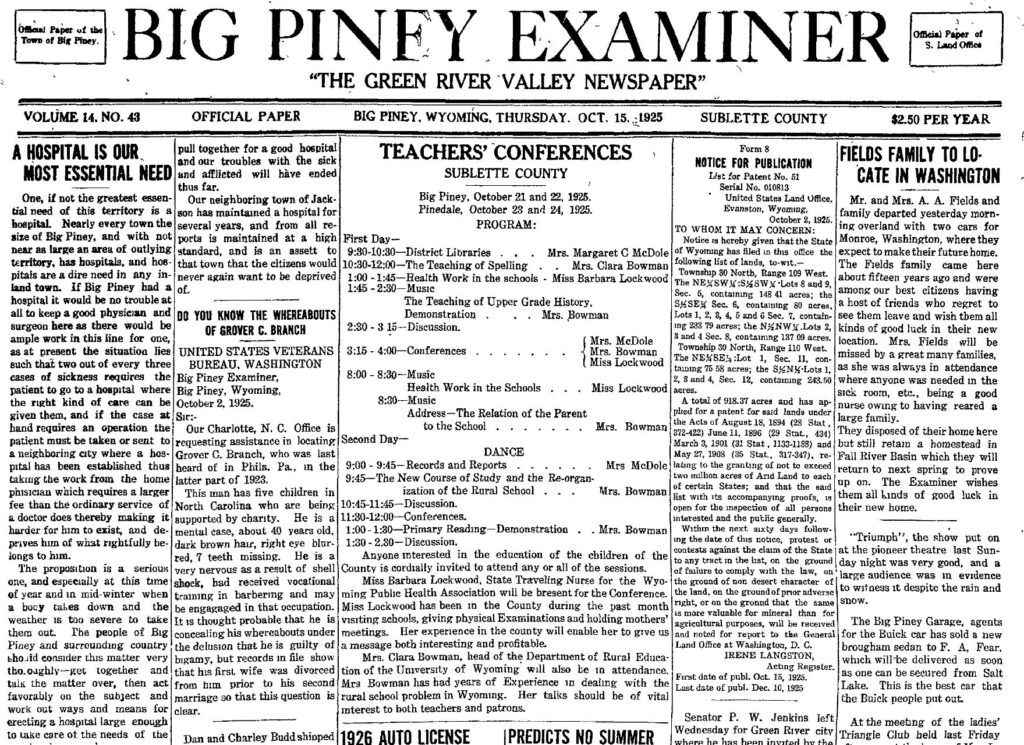
“The opening of this facility is already positively impacting lives in the valley,” said Jeff Mincy, CEO of North Platte Valley Medical Center. “I hear daily about the wonderful compassionate care that our team provides, and the much-anticipated improvements in access, technology and level of care provided for the valley.”
Data-driven needs, USDA funding
Wyoming is not alone in its need for more accessible medical services.
Over 80% of counties across the U.S. lack adequate health care infrastructure in some shape or form, according to a GoodRX report mapping the nation’s health care deserts. That means that over a third of the nation’s population lives in a county where there is less than adequate access to pharmacies, primary care providers, hospitals, trauma centers and low-cost health centers.
Wyoming’s three new hospitals obtained funding through the USDA Rural Development Community Facilities Direct Loan and Grant Program, creating locally owned and governed health care facilities. To qualify for funding, a community must have less than 20,000 people.
“Rural health care is particularly important to us, because it is difficult to have a prosperous community without these services,” Pauley said. “It can be an issue of life and death. In Saratoga, it was a 43-minute drive to Rawlins for critical health care services for emergencies. That is a very long time to have a cardiac patient [waiting].”
The Sublette County Hospital District received a $32.2 million USDA loan for its facility. The newly-formed hospital district, approved by voters in 2020, will pull together $73.8 million, including county, state and private funding.
The Riverton Medical District was awarded a USDA Rural Development loan of $37 million and met its funding goal of $54 million last November.
“We went back to our community, we went to our legislators and said we needed money, and through [the State Loan and Investment Board] we were granted $10 million,” Watkins said.
Still waiting on a start letter from the USDA, Watkins said she hopes to begin construction very soon.
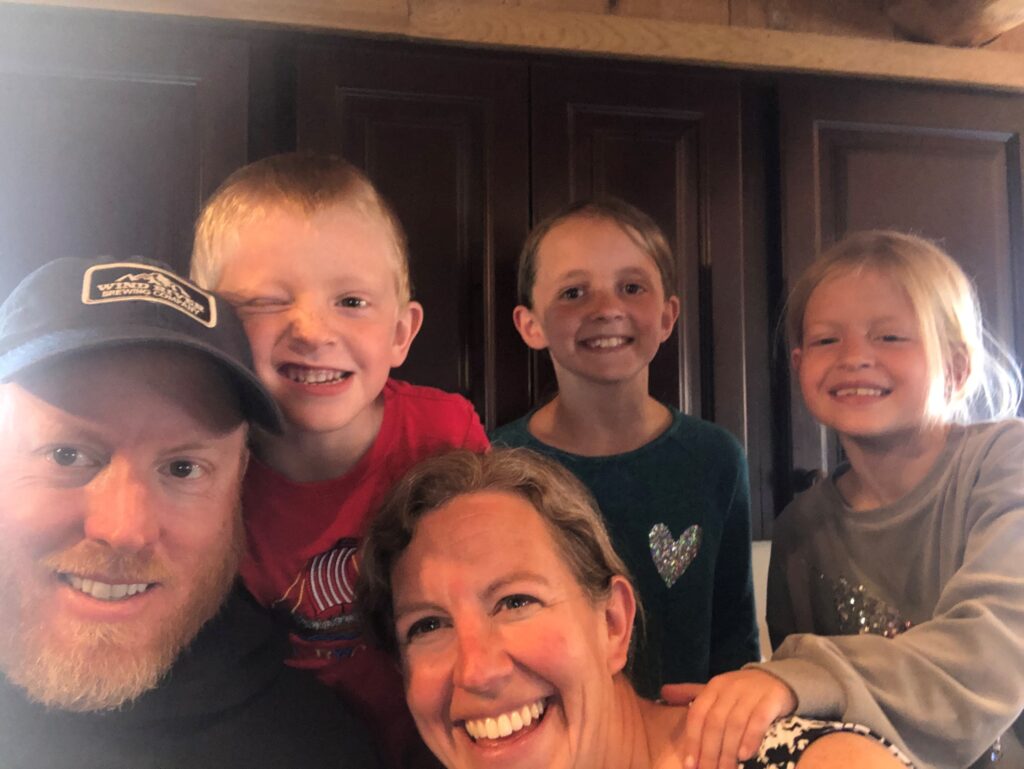
“There’s a lot of activity out there, with our purchase of eight acres in the business park,” Watkins said. “The developer agreed to make our site pad-ready. All of the infrastructure, streets, curbs and gutters are going in. From the minute we begin construction, they will be finished in 16 months.”
Now open, the $23 million Saratoga hospital, which secured $18 million in USDA long-term financing, includes, but is not limited to, a 24/7 ER, inpatient hospital, extended care, physical and occupational therapy and a high complexity laboratory. The Platte Valley Clinic is also inside the hospital.
“This is the first new hospital built in Wyoming in decades, which led to a lot of unknowns, but this team has stuck it out,” Mincy said.
USDA Rural Development is somewhere around the ninth to the 11th largest lender in the United States, according to Lorraine Werner, special projects coordinator for the program. Werner received over 400 letters of support for the Riverton project, and in Sublette County, the county commissioners provided $20 million in grant funding to build a nursing home and memory care facility adjacent to the hospital. In Saratoga, “people were donating money left and right” to the hospital project, Werner said.
While Pauley sees USDA programs as playing an important role going forward, they’re also “just resources.”
“You talk to any one of these hospital boards, and it is not an easy process,” Pauley said. “They’re all volunteers, and we don’t tell anyone what to do or go in proactively and identify communities. But when communities have these needs, we are here to help.”
Check back for part two, coming soon.

